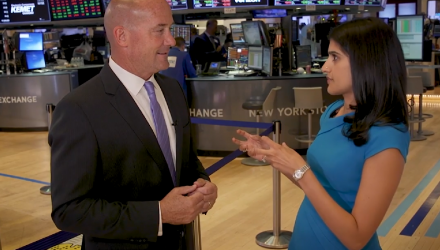In fact, JP Morgan has the JPMorgan Event Driven ETF (NYSEArca: JPED) that exposes investors to specific events, such as mergers, acquisitions and share buybacks. JPED seeks to achieve its investment objective by employing an event-driven investment strategy, primarily investing in companies that the firm believes will be impacted by pending or anticipated corporate or special situation events based on a systematic investment process.
International Markets Exposure
Certain international markets, emerging markets in particular, have been turned inside out this year after a spectacular run in 2017, but before an investor looks to dive into the deeply-discounted EM space, he or she must be still selective and exercise due diligence. Simply selecting a country-specific ETF in emerging markets without the proper research could be akin to catching a falling knife and as such, investors must use caution.
“It’s still an attractive place to be,” said Dahya. “It’s still a good source of diversification in your equity bucket. Valuations are still attractive. I would argue that similar to the U.S., maybe try something non-market cap weighted, something that is a little more balanced, something that can weather that volatility.”
Dahya references the JPMorgan Diversified Return International Equity ETF (NYSEArca: JPIN), which has been a success story for the firm since it has been able to demonstrate downside capture. JPIN seeks investment results that closely correspond to the performance of the JP Morgan Diversified Factor International Equity Index, which is comprised of equity securities across developed global markets (excluding North America) selected to represent a diversified set of factor characteristics: value, price momentum and quality.
Short Duration Fixed Income
In September, a hawkish Federal Reserve raised the federal funds rate another 25 basis points with hints that a fourth and final rate hike to cap off 2018 is likely behind a tailwind of positive economic data. This has presented challenges for fixed-income investors who are also seeing rising yields in benchmark Treasury notes.
“Fixed income is a very hard place for investors right now because of this fear they have of rising rates,” said Dahya. “I want investors to know there are solutions for you to help get the most out of your fixed income allocations.”
According to Dahya, one area where investors can seek opportunities is shorter duration strategies to limit prolonged exposure to the bond markets. This addresses two main fear factors in the fixed income markets—rising interest rates and a flattening yield curve.
“What investors are looking for is strategies that can help protect against rising rates, but still preserve their yield,” said Dahya.
Dahya mentioned JP Morgan’s strategy of giving investors broad market exposure to bonds via the Bloomberg Barclays U.S. Aggregate Bond Index (Barclays AGG), but with shorter duration. In fact, Dahya mentioned that the firm’s strategies have provided investors with 80% of the yield from the Barclays AGG, but with 8% of the duration—a value proposition worth considering in the bond markets.
Late Market Cycle Breeding Innovation
It’s no secret that this month, financial advisors have been getting nervous calls from investors spooked by rising interest rates and trade wars, but Dahya reminds us that product differentiation is at its height given the growth of the ETF industry the last decade. As such, the innovation seen in the ETF industry has given investors more options in times of volatility and in the event of downturn, advisors have more alternatives to consider when steering their investors towards the best course of action for their respective portfolios.
“One of the most amazing trends I think that’s existed in ETFs in the last couple of years in the ETF ecosystem is all the product innovation that’s been happening,” said Dahya.
To watch the entire latest “In the Know” show, click here.
